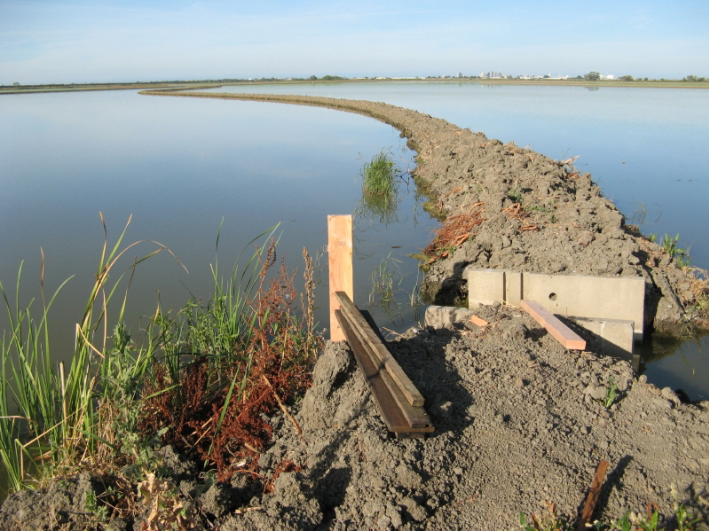State Water Resources Control Board


MeHg is a critical water quality pollutant affecting commercial and recreational fishing within the San Francisco Bay-Delta (SFB-D). Wetlands are significant MeHg production sites in the San Francisco Bay Delta and elsewhere; delta wetlands are estimated to produce approximately 40% of the aqueous MeHg present in the San Francisco estuary. Of the 8 sub-watersheds in the Delta, the wetland-dominated Yolo Bypass (YB) has the highest average annual surface water MeHg concentration, requiring a 70% reduction to meet total maximum daily load (TMDL) goals.
The primary wetland types in the YB include rice and wild rice fields farmed annually, fields that undergo crop rotation management, and non-farmed seasonal and permanently flooded wetlands. The purpose of the project was to characterize links between MeHg production and wetland type and management so that TMDL MeHg reduction goals can someday be met.
Tetra Tech (dba Bachand and Associate) quantified surface water hydrology and loads for the different agricultural wetlands. They installed equipment for continuous monitoring of flow to and from the wetlands; supported discrete sampling for water quality and hydrologic constituents; and managed hydrologic and water quality data through development of an ACCESS database. Tetra Tech implemented PFR and CFSTR mass balance reactor models to analyze the data. Products from those models included quantifying loads onto the system and exported via surface water or groundwater; determination and quantification of net ecosystem production of MeHg; identification of management practices to control MeHg surface exports; modeling soil transport via advection and diffusion and identifying seasonal and diel transport trends; and identifying the importance of transpiration regarding constituent transport in long HRT systems like rice fields and restored wetlands. Tetra Tech co-authored the final report for this project and three manuscripts that have been published in STOTEN. Tetra Tech was lead author of two of those manuscripts which identify the importance of transpiration on loading trends and transport pathways of MeHg in wetland systems.
Contact
Sujoy Roy
(925) 280-7429





